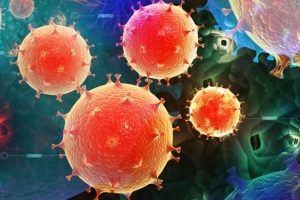Two-step synthesis procedure produces amino acid Schiff base Cu (II) complexes within 10 minutes

Ever since their development in the late 19th century, Schiff bases have been a popular group of organic compounds, owing to their wide variety of desirable properties. The presence of both nitrogen and oxygen in their structure makes them versatile molecules with an array of applications, ranging from dyes and catalysts to environmental sensors and raw materials for chemical synthesis.
Recently, there has been growing interest in the biological activity of Schiff bases, as researchers have discovered that metal complex derivatives of Schiff bases can serve as antioxidant, antimicrobial, and anticancer agents. Among these compounds, studies have shown that amino acid Schiff base copper (Cu) complexes have the most promising antimicrobial properties; however, the reaction time taken to create these compounds can range from hours to days.
In a recent breakthrough published on 18 June 2022 in Applied Microbiology, a team of researchers led by Professor Takashiro Akitsu from the Tokyo University of Science reported a two-step synthesis procedure that produced amino acid Schiff base Cu (II) complexes within a mere 10 minutes! The team included Dr. Estelle Léonard and Dr. Antoine Fayeulle from ESCOM, TIMR (Integrated Transformations of Renewable Matter), Centre de Recherche Royallieu, University of Technology of Compiègne, France.
"Amino acid Schiff base Cu (II) complexes have the potential to be used as antimicrobial agents but their wider applications are being limited by conventional methods for synthesis that often takes several hours and sometimes days. With our research, we aim to overcome this challenge by making the synthesis process more facile," comments Prof. Akitsu on the rationale behind their study.
The team used microwave irradiation to prepare these compounds, owing to its ability to greatly accelerate the reaction while providing controlled heating. This method also ensures higher yields, better purity, and fewer by-products. Additionally, they chose methanol as the solvent for the reactions. With a high loss tangent of 0.659, which determines the ability to convert microwave energy into heat, and a high microwave absorption rate, methanol was ideal for accelerating the reactions and lowered the global reaction time to 10 minutes.
To gauge the antibacterial properties of the compounds, the researchers tested them against various bacteria. They found that the one- and two-chlorine substituted complexes showed better action against bacteria, with remarkable activity against E. coli, than the molecules with no chlorine groups. The team also noted the presence of light antioxidant properties in the one- and two-chlorinated complexes. In the future, the team aims to check for the toxicity of these compounds toward kidney, liver, and skin cells.
This new synthesis technique minimizes the global reaction time, maximizes the reaction conditions, and produces high purity products with promising antibacterial activity. The insights from this study can be used as a framework for the development of fast and facile synthesis techniques for biologically active amino acid derivatives of Schiff base metal complexes.
Bacterial infectious diseases are a major threat to public health. Our study aims to contribute towards the improvement of health care systems in developing nations that are often affected by infectious epidemics."
Takashiro Akitsu, Professor, Tokyo University of Science
Tokyo University of Science
Otani, N., et al. (2022) Synthesis, Identification and Antibacterial Activities of Amino Acid Schiff Base Cu(II) Complexes with Chlorinated Aromatic Moieties. Applied Microbiology. doi.org/10.3390/applmicrobiol2020032.
Posted in: Biochemistry
Tags: Amino Acid, Antioxidant, Bacteria, Bases, Copper, E. coli, Health Care, heat, Imines, Infectious Diseases, Kidney, Liver, Methanol, Microbiology, Oxygen, pH, Public Health, Research, Skin, Skin Cells
Source: Read Full Article